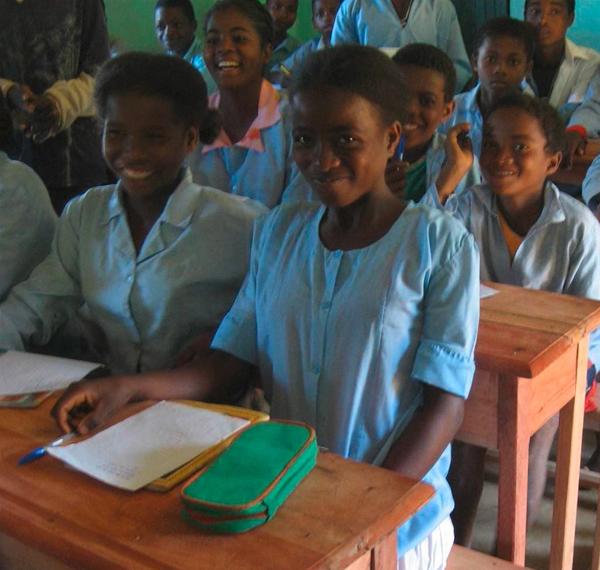Drilling Into The Detail

One of our main areas of work in Madagascar is the bringing of safe, clean drinking water to rural communities. There are three methods we use to do this: the drilling of a well, the building of rainwater catchment or the installation of a gravity fed system. Drilling a well is by far the most common way we do this.
To drill a well we use two manual drilling processes: sludging or jetting.
Sludging uses water circulation to bring the cuttings up to the surface. The drill pipes are moved up and down manual. On the down stroke, the impact of the drill bit loosens the soil and on the up stroke, water is drawn up through the pipe bringing the cuttings to the surface. On the next down stroke, water is released from the top of the pipe into a pit. Here the cuttings separate from the water and settle out, the water is then recirculated and used to for the next down stroke. The borehole stays open by water pressure. Thickeners are also added to the water to prevent the hole collapsing and reduce the loss of working water (drill fluid).
Similarly at some of our wells we use another water circulation technique known as Jetting. As opposed to sludging, water is pumped down the drilling pipes. The large volume of water has an erosive effect at the bottom and the ‘slurry’ (water and cuttings) are transported up between the drill pipe and the borehole wall. A motor pump is used to achieve an adequate water flow. The drill pipe may simply have an open end, or a drill bit can be added and partial or full rotation of the drill pipe can be used.

Depths of between 35 and 45 metres can be reached using these techniques. It is a sustainable process – the manual drilling allows us to transport equipment to the remotest of villages and bring life changing access to water to those that need it most.

Perline, 15, attends Ambolomadinika Secondary School where we are currently drilling a well. She says: “Our school lacks any clean water for drinking. We take it in turns to fetch water from the river. We know that the river water is dirty and most of us suffer from diseases, but we have no other choice. Having clean water would make a huge difference to my life and to my school.”
We are grateful to the staff of Feedback Madagascar who help coordinate the drilling process. Knowing the impact safe, sustainable water has on rural communities in Madagascar motivates us as we continue our work in the WASH sector (water, sanitation and hygiene).
If it motivates you or your company/workplace to donate to our water projects – please get in touch.
